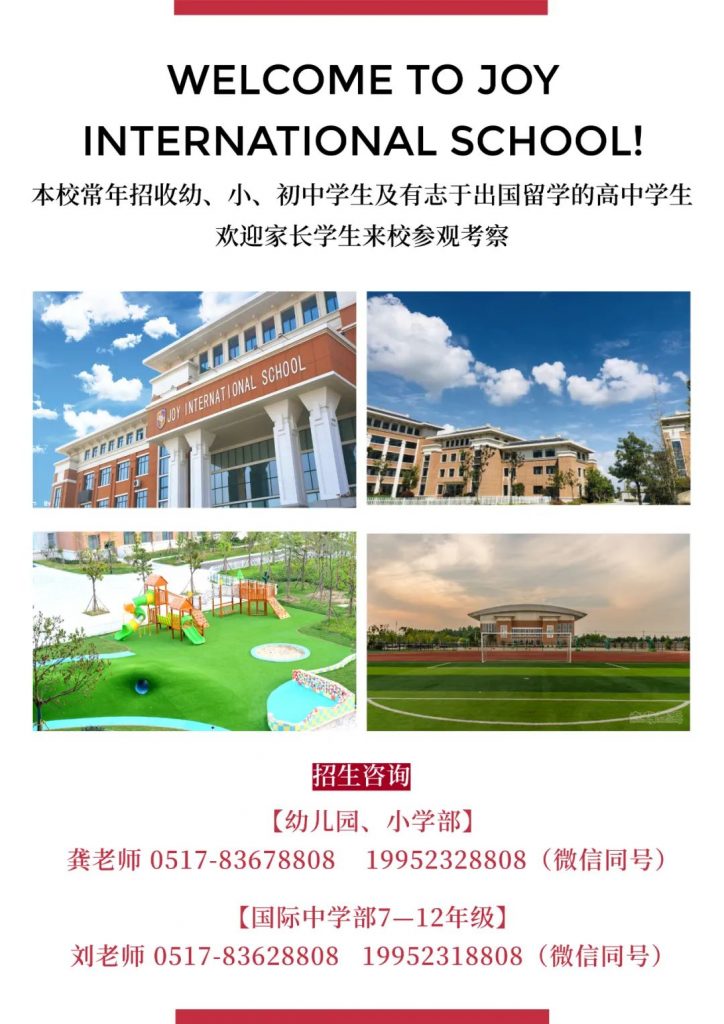Warm and Fuzzy: A Positive Behavior Management Strategy正面行为管理策略
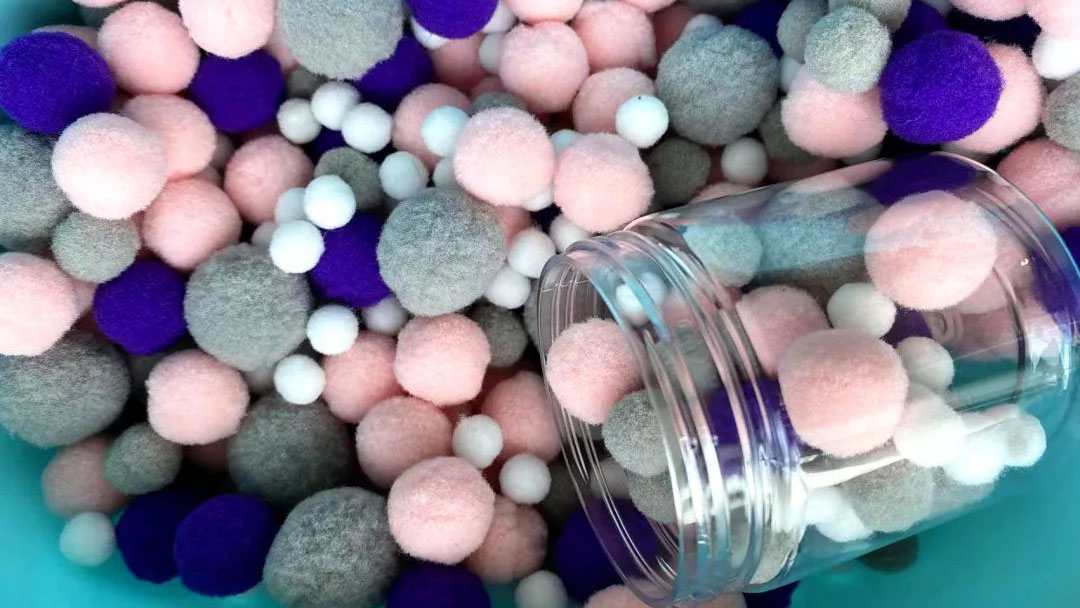



Students misbehave. It’s a reality and how a teacher responds is known as a Behavior Management System.
学生会有行为不当,这是现实,教师如何反应被称为“行为管理系统”。
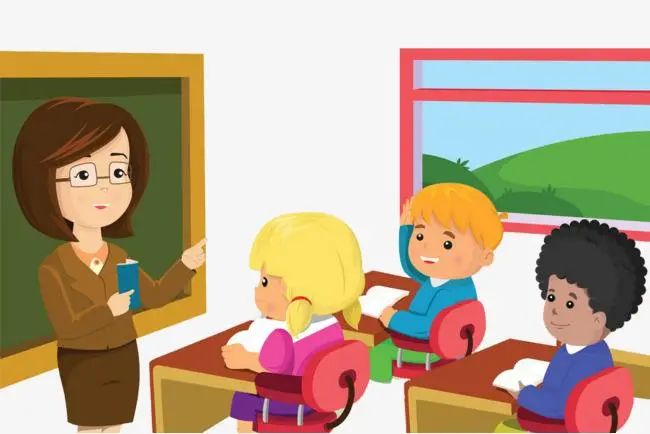








Let’s start by taking a look into the past about 10-15 years ago and think: when a student misbehaved, what was the consequence? Was the consequence a slap on the back of the head? Was the consequence a ruler to the back palm of the hand? Was the consequence a public humiliation? These techniques have been quite common in the past. And although they were common, does it make them correct?
首先,让我们看看10-15年前的过去,思考一下:当一个学生行为不当时,会有什么后果?会是后脑勺上的一记耳光吗?还是手掌上的一下戒尺?或是公开的羞辱?这些操作在过去非常普遍。虽然常见,但能说明这是正确的吗?







As the education field has evolved, there have been more theories and more ideas as to how to respond to students when they misbehave. One such thought is that of Positive Reinforcement. Positive reinforcement is an idea where a behavior that is wanted will be reinforced by an incentive, either in a big or small way. This sounds simple, but the catch is that negative behaviors or unwanted behaviors will not be punished, they’ll be ignored. The thought behind this is that when others see the positive behavior being reinforced, they’ll want to stop the negative behaviors to earn the reward.
随着教育领域的发展,出现了更多的理论和想法来应对学生的不当行为。其中一个就是“正向强化法”。这个理论强调:培养孩子的行为是通过激励得到强化,无论是以大的方式还是以小的方式。听起来很简单,关键是负面的行为或不得当的行为不受到惩罚,而是被忽略。这背后的思想是,当其他人看到积极的行为被加强时,他们会想要停止消极的行为来获得奖励。







Some types of rewards include:
奖励的类型包括:
- Natural Incentive: something that occurs directly as a result of the behavior (I studied hard for a test and then did well, earning a good grade) .
自然的激励:行为直接引起的事情(我为了考试努力学习,然后考得很好,获得了一个好成绩)。 - Token Incentive: things that are awarded for performing certain behaviors that can be exchanged for something of value (I did my homework in Chinese Class and I received a sticker. If I collect five stickers, I get a special eraser from the teacher).
代金券的激励:做出某些行为而获得的奖励,这些行为可以用来交换有价值的东西,(我在语文课上做作业,然后收到一张贴纸。如果我收集到五张贴纸,我就会从老师那里得到一块特别的橡皮)。 - Social Incentive: someone expressing their approval (in class my teacher told me “good job” when I answered the question correctly) .
社会激励:某个人表示赞同(在课堂上,当我正确地回答了问题时,老师说我“做很好”)。 - Tangible Incentive: physical incentives (I helped the teacher take out the trash and she gave me a lollipop for helping her).
有形激励:物质激励法(我帮助老师把垃圾拿出去,她给了我一根棒棒糖作为对我帮助她的感谢)。
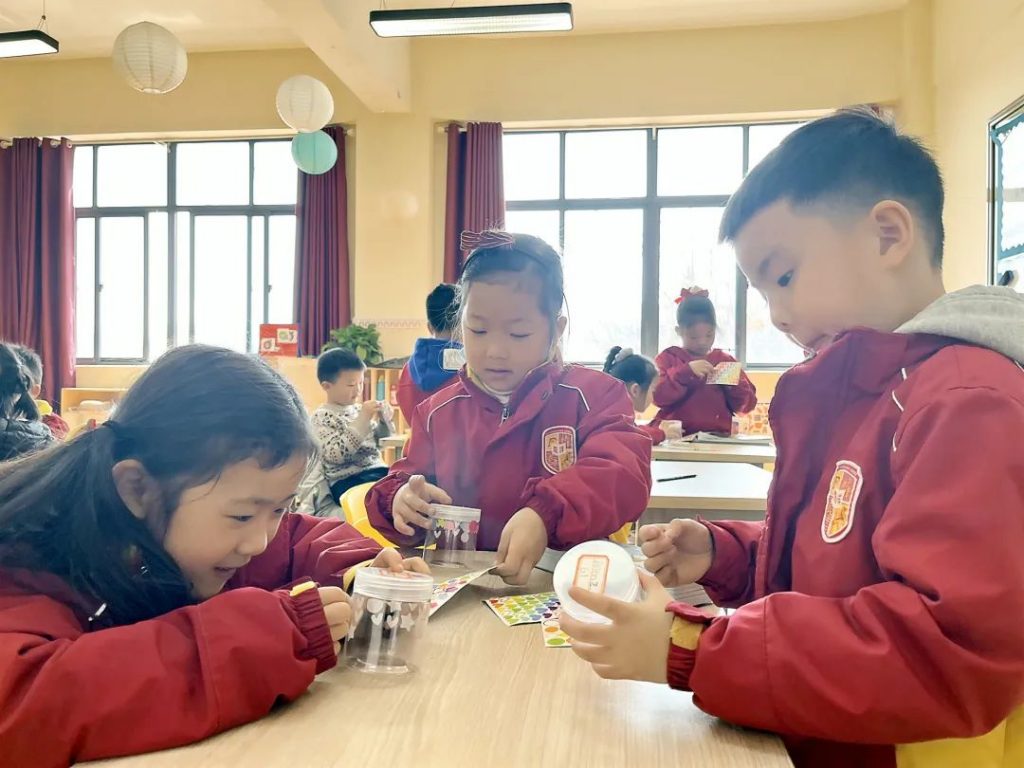

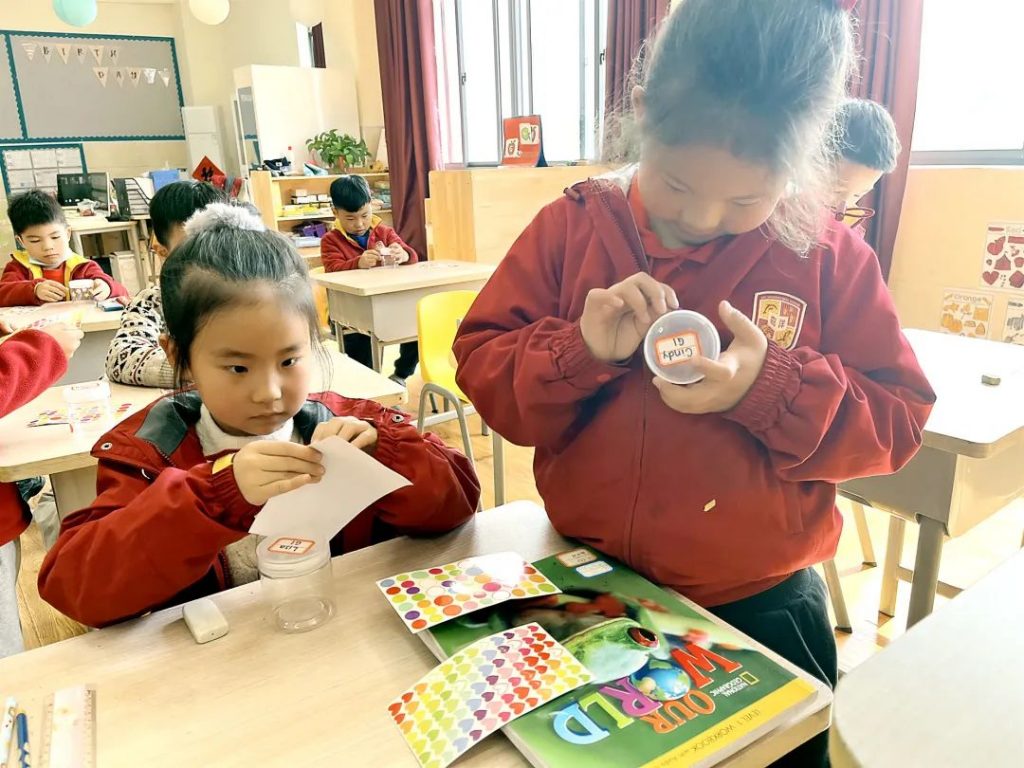

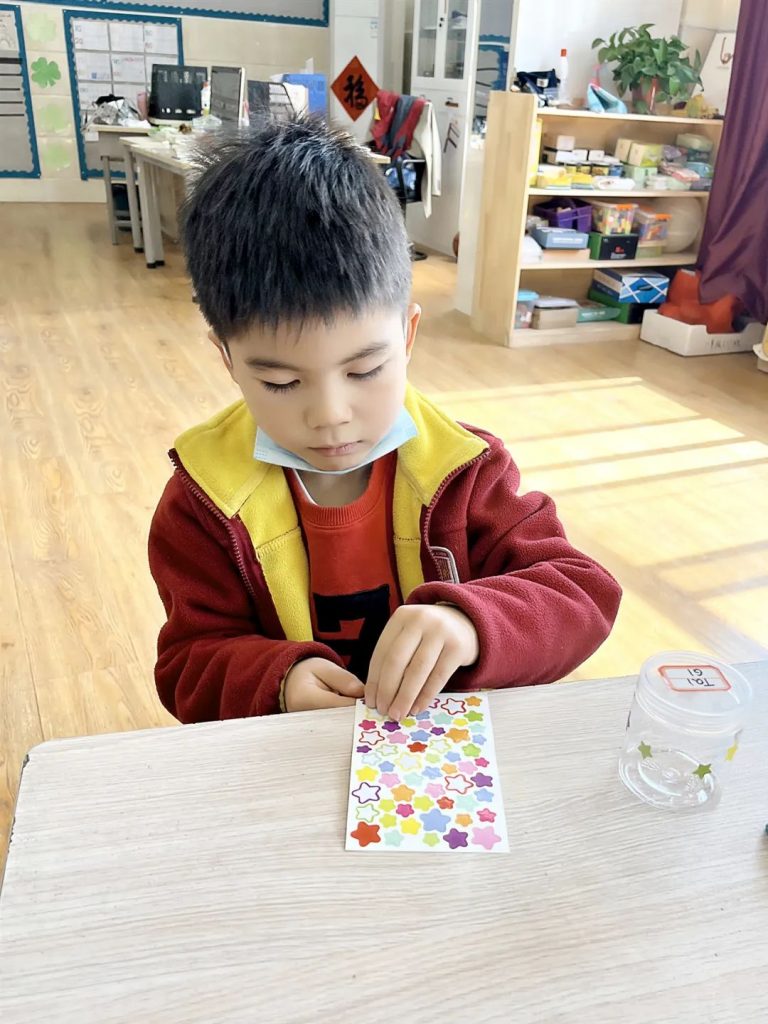








In the Grade One and Grade Two classrooms we utilize a special Positive Behavior System. It’s called “Warm and Fuzzy”. Think about how you feel when you’re happy-do you feel warm inside? Maybe a little fuzzy? This is what we are trying to capture in Grade One and Grade Two.
在一年级和二年级的教室里,我们使用一个特殊的正面行为管理,它叫“暖暖和绒绒”。想想你快乐时的感觉——你内心感到温暖吗?可能心里有点毛绒绒的感觉?这就是我们试图在一年级和二年级捕捉的东西。
Each student has a “Warm and Fuzzy Jar.” These jars keep their warm and fuzzies! So what are warm and fuzzies? Well, they’re soft pompoms…they’re warm and fuzzy! I, as the teacher, have a large Jar of these warm and fuzzies (colorful pompoms of different sizes).
每个学生都有一个用来存放“暖暖和绒绒的罐子”。那么什么是暖暖和绒绒呢?其实它们就是小绒球!我,作为老师,用一个大罐子装着这些温暖的毛绒绒的小球(不同大小的彩色绒球)。


At the beginning of each class the students pick up their Warm and Fuzzy Jar and place is on their desk. While class is in session anytime a student makes me happy, or gives me a warm and fuzzy feeling, I fill their jar with a large or small warm and fuzzy depending on what they did to make me feel happy. Basically, I’m rewarding their positive behaviors.
在每节课的开始,学生们拿起他们的“暖暖和绒绒的罐子”,放在他们的桌子上。当上课时,一个学生让我开心,或给老师一个温暖和绒绒的感觉,我就会把他们的罐子填满或大或小的温暖而又毛绒绒的小球,当然这取决于他们做了什么,让我感到快乐。基本上,我是在奖励他们的积极行为。
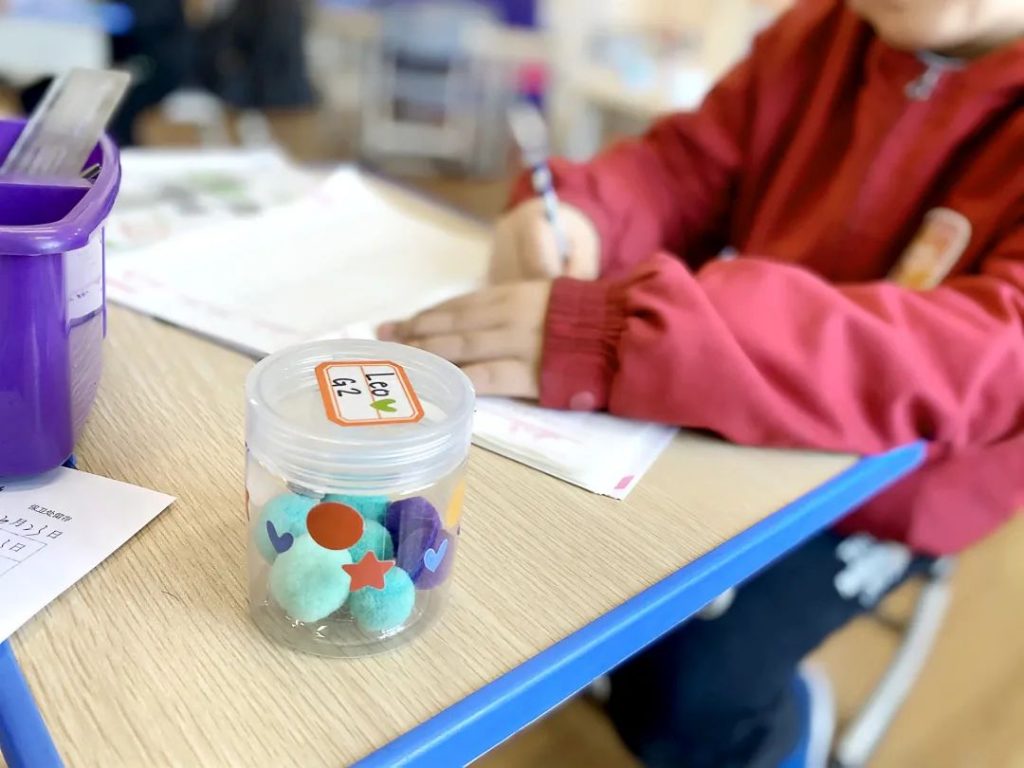

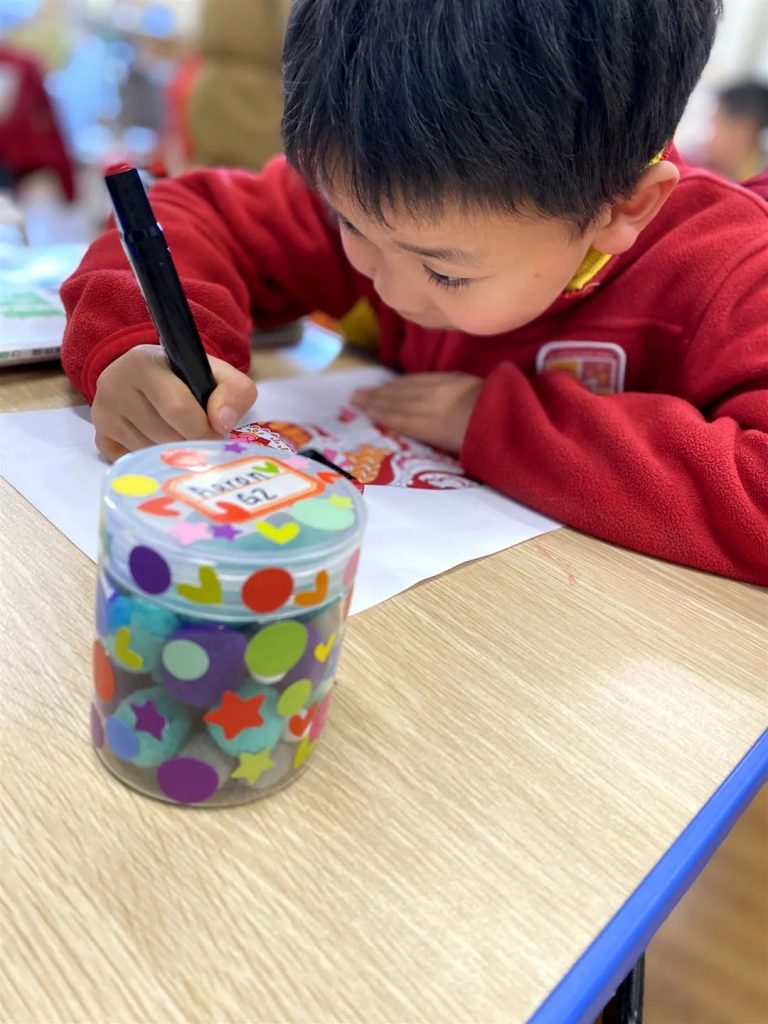








So what happens to the students who aren’t behaving as positively? Well, nothing. There are no warm and fuzzies added to their Warm and Fuzzy Jar. This makes a big impression believe it or not, because if Student A sees Student B and C receiving a lot of warm and fuzzies through their positive actions like raising their hand to talk, helping a friend in need, or completing classwork on time, then eventually they are going to want to do the same. Student A’s jar is staying empty while Student B and Student C’s jar is filling up! This is also a topic of conversation when they’re not in class. Students like to look at their jars and see all the warm and fuzzies inside. So even when we aren’t in class, the students are still thinking about it and how to receive more.
所以,那些行为不积极的学生会怎么样呢?什么都没有得到。没有暖暖绒绒球添加到他们罐子。信不信由你,这会产生很大的影响。因为如果学生A认为学生B和C通过积极行为收到很多温暖和毛绒绒的小球,那么最终他们将会做同样的事情。比如举手之后开始说话;帮助需要帮助的朋友;按时完成作业。学生A的罐子是空的,而学生B和学生C的罐子是满的!这也是他们下课时的一个话题。学生们喜欢看着他们的罐子,看到里面所有温暖和毛绒绒的小球。因此,即使没在上课,学生们仍在思考如何得到更多的小球。









When a student’s Warm and Fuzzy Jar is full they can take it to me during recess. They’ll dump their warm and fuzzies back into my large jar and pick a small prize like a small bubble wand or magic cactus that grows in water. Then, they’ll start the cycle all over again.
如果学生的“暖暖和绒绒的罐子”装满了,他们可以在下课后把它带给我。他们会把这些小绒倒回我的大罐子里,然后挑选一个小奖品,比如小泡泡棒或在水中生长的神奇仙人掌。然后,他们将开始重新循环积攒小毛球。
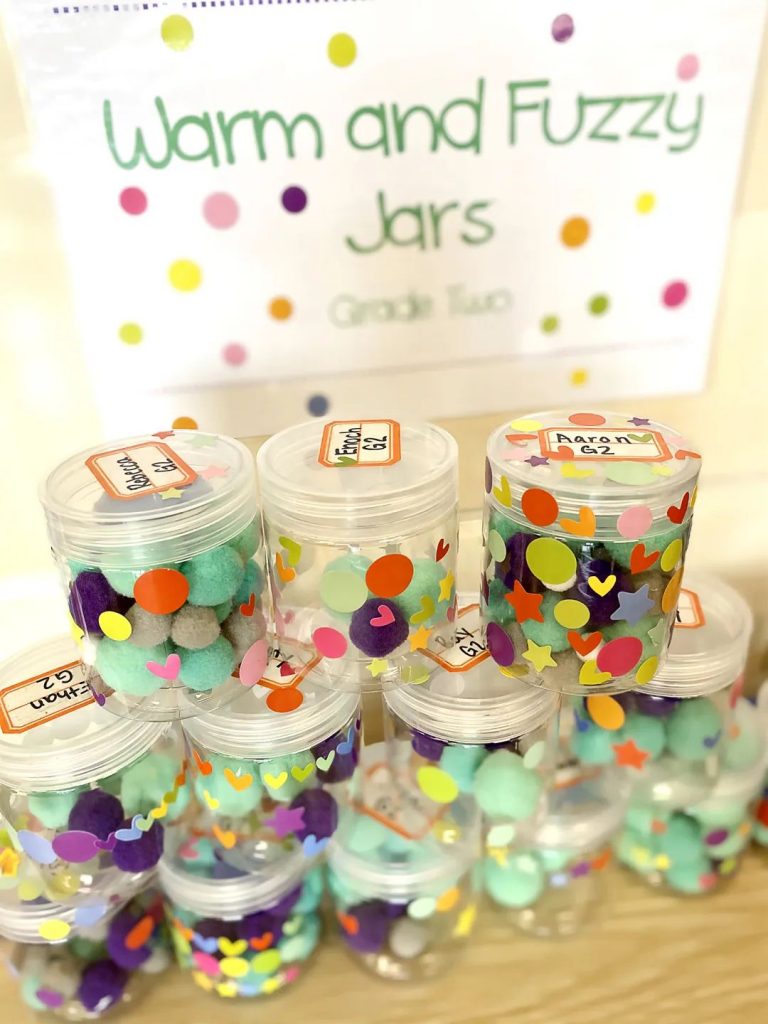






The warm and fuzzy jar isn’t an end all to all negative student behavior, but it can help set a positive motion for student behavior.
小绒球的罐子并不能消除学生所有的消极行为,但它可以为学生的行为设定一个积极的动机。
Written by: Teacher Jessica
文 / Jessica老师
